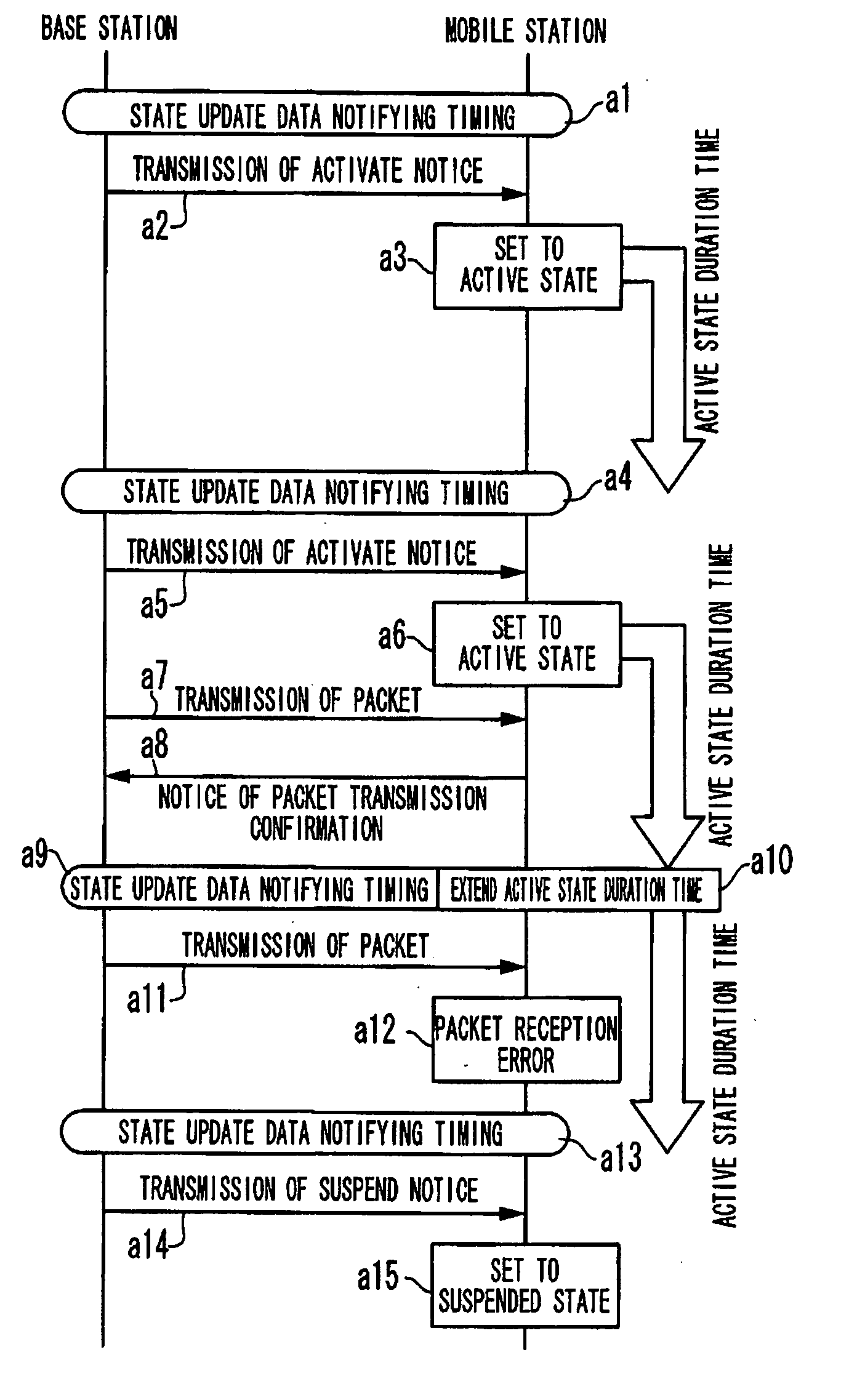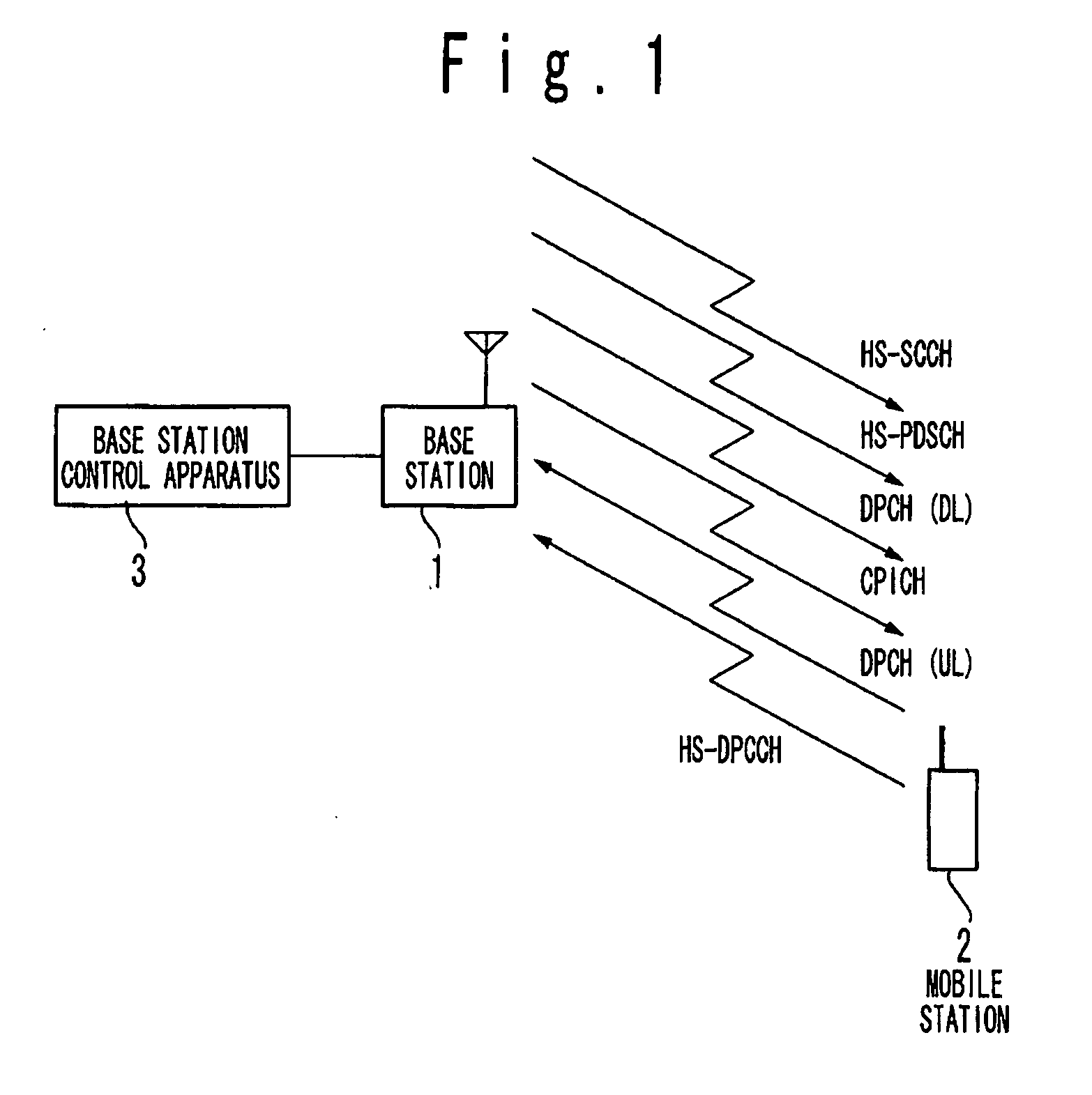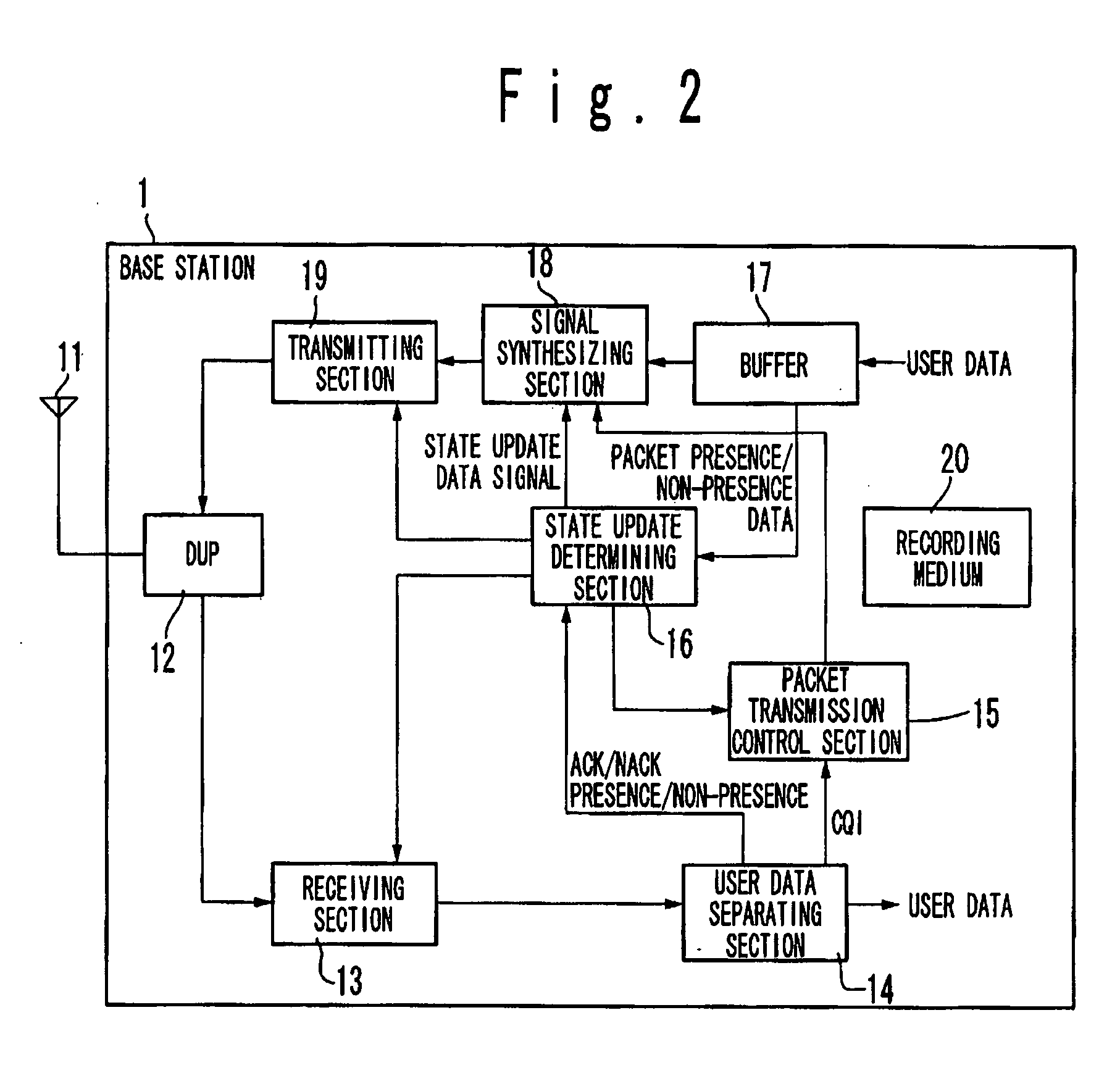System and method for mobile communication
a mobile communication and system technology, applied in the field of radio communication system and method, can solve the problems of increasing the large and the large amount of the mobile station's power consumption, so as to reduce the power consumption of the mobile station
- Summary
- Abstract
- Description
- Claims
- Application Information
AI Technical Summary
Benefits of technology
Problems solved by technology
Method used
Image
Examples
first embodiment
[0054]FIG. 1 is a block diagram showing a configuration of the mobile communication system according to the first embodiment of the present invention. The mobile communication system is provided with a base station 1, a mobile station 2, and a base station control apparatus 3.
[0055] The mobile communication system in the first embodiment supports HSDPA. Specifically, a downlink and an uplink that connect the base station 1 and the mobile station 2 are substantially configured as defined in 3GPP TR (Technical Report) 25. 858, V5.0.0 ( March, 2002). The downlink is composed of CPICH (common pilot channel), HS-PDSCH (high speed physical downlink shared channel), HS-SCCH (high speed shared control channel), and downlink DPCH (downlink dedicated physical channel). The uplink is composed of HS-DPCCH (high speed dedicated physical control channel) and uplink DPCH (uplink dedicated physical channel).
[0056] Communication between the base station 1 and the mobile station 2 is substantially ...
second embodiment
[0097] In the second embodiment, a time period during which the mobile station 2 is in the active state (to be referred to as “active state duration time” hereinafter) is controlled by the base station control apparatus 3 in accordance with a load of the base station 1. More specifically, the active state duration time is controlled in accordance with the number of the mobile stations 2 connected to the base station 1. Configurations and operations of the base station 1, the mobile station 2, and the base station control apparatus 3 are changed for the control of the active state duration time. The operation of the mobile communication system will be described below after the configuration of the mobile communication system in the second embodiment has been described.
(Configuration of the Mobile Communication System)
[0098] The base station control apparatus 3 is configured to contain a receiving end 41 to which a signal is transmitted from the base station 1, a reception processi...
third embodiment
[0125] In the third embodiment, the active state duration time is controlled in response to a maximum transmission rate between the base station 1 and the mobile station 2, instead of the number of mobile stations 2 connected to the base station 1. When the maximum transmission rate is lower, the active state duration time is made longer. This is because there is a higher possibility that a transmission time necessary to transmit data to the mobile station 2 is made longer as the maximum transmission rate is lowered.
[0126] As shown in FIG. 14, the base station control apparatus 3 is provided with a mobile station maximum transmission rate data extracting section 49 instead of the connected mobile station number data extracting section 44, for control of the active state duration time based on the maximum data rate. The mobile station maximum transmission rate data extracting section 49 extracts the maximum transmission rate in communication between the base station 1 and the mobile...
PUM
 Login to View More
Login to View More Abstract
Description
Claims
Application Information
 Login to View More
Login to View More - R&D
- Intellectual Property
- Life Sciences
- Materials
- Tech Scout
- Unparalleled Data Quality
- Higher Quality Content
- 60% Fewer Hallucinations
Browse by: Latest US Patents, China's latest patents, Technical Efficacy Thesaurus, Application Domain, Technology Topic, Popular Technical Reports.
© 2025 PatSnap. All rights reserved.Legal|Privacy policy|Modern Slavery Act Transparency Statement|Sitemap|About US| Contact US: help@patsnap.com



